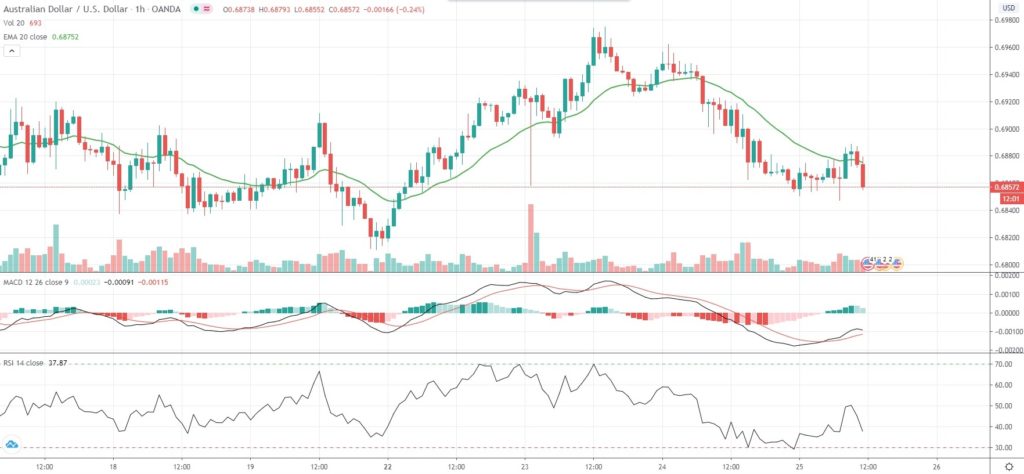After its largest single-day drop since June 11th on Wednesday, AUD/USD extended losses in late European trade on Thursday, as risk aversion persisted.
Mounting concerns over the coronavirus resurgence in multiple parts of the globe have delivered a sizable blow to market sentiment, as the V-shaped economic recovery expected by many seemed to be in peril. Global confirmed cases of the COVID-19 illness have surpassed 9.556 million, latest data showed, with Russia, Mexico, Gulf countries, India and Brazil reporting a sharp surge in new infections. At the same time, the United States reported the second-largest increase in new cases since the beginning of the health crisis, including in areas where lockdown restrictions were lifted early.
Global economic activity appeared to have been damaged by the pandemic more severely than initially thought. Yesterday the International Monetary Fund further revised down its global growth forecast, as it now projects a 4.9% contraction in GDP this year. In April, it had forecast a 3.0% drop in output.
In addition, reports of the US considering a change in tariff rates on various EU goods as part of a 16-year dispute over aircraft subsidies also soured market sentiment. The US Trade Representative’s office is weighing whether to impose tariffs on $3.1 billion worth of goods from key EU exporters. The Aussie tends to be quite sensitive to news of potential trade flow disruptions.
As of 11:53 GMT on Thursday AUD/USD was retreating 0.19% to trade at 0.6855, after earlier touching an intraday low of 0.6848, or a level not seen since June 22nd (0.6811). The major pair has trimmed gains for the week, now being up 0.31%.
Thursday’s market focus will be on the US GDP report scheduled to be released at 12:30 GMT. The final estimate of the US Gross Domestic Product probably pointed to an annualized rate of contraction of 5.0% in the first quarter of 2020, according to market expectations. If so, it would confirm the second GDP estimate, reported on May 28th. It has been the steepest economic contraction since Q4 2008. In Q4 2019, the economy expanded at an annualized rate of 2.1%, according to final data.
Also at 12:30 GMT the US Labor Department will report on jobless claims. The number of people in the country, who filed for unemployment assistance for the first time during the business week ended June 19th, probably eased to 1,300,000, according to expectations, from 1,508,000 in the preceding week. The latter has been the lowest number of claims since the coronavirus crisis began in March.
At 13:30 GMT Federal Reserve President for Dallas Robert Kaplan is to participate in moderated question-and-answer session at the Reinventing Bretton Woods Committee Webinar: “The World Economy Transformed.”
At 15:00 GMT Federal Reserve President for Atlanta Raphael Bostic is scheduled to speak on “Florida’s Economic Relaunch — What’s Next?” during a Florida Chamber of Commerce webinar.
And at 16:00 GMT Federal Reserve President for Cleveland Loretta Mester is to give welcome remarks during a webinar hosted by the Federal Reserve Bank of Cleveland aimed to answer borrowers’ questions about the Paycheck Protection Program.
Bond Yield Spread
The spread between 2-year Australian and 2-year US bond yields, which reflects the flow of funds in a short term, equaled 6.5 basis points (0.065%) as of 10:15 GMT on Thursday, up from 6.2 basis points on June 24th.
Daily Pivot Levels (traditional method of calculation)
Central Pivot – 0.6898
R1 – 0.6933
R2 – 0.6997
R3 – 0.7032
R4 – 0.7067
S1 – 0.6833
S2 – 0.6799
S3 – 0.6734
S4 – 0.6670






